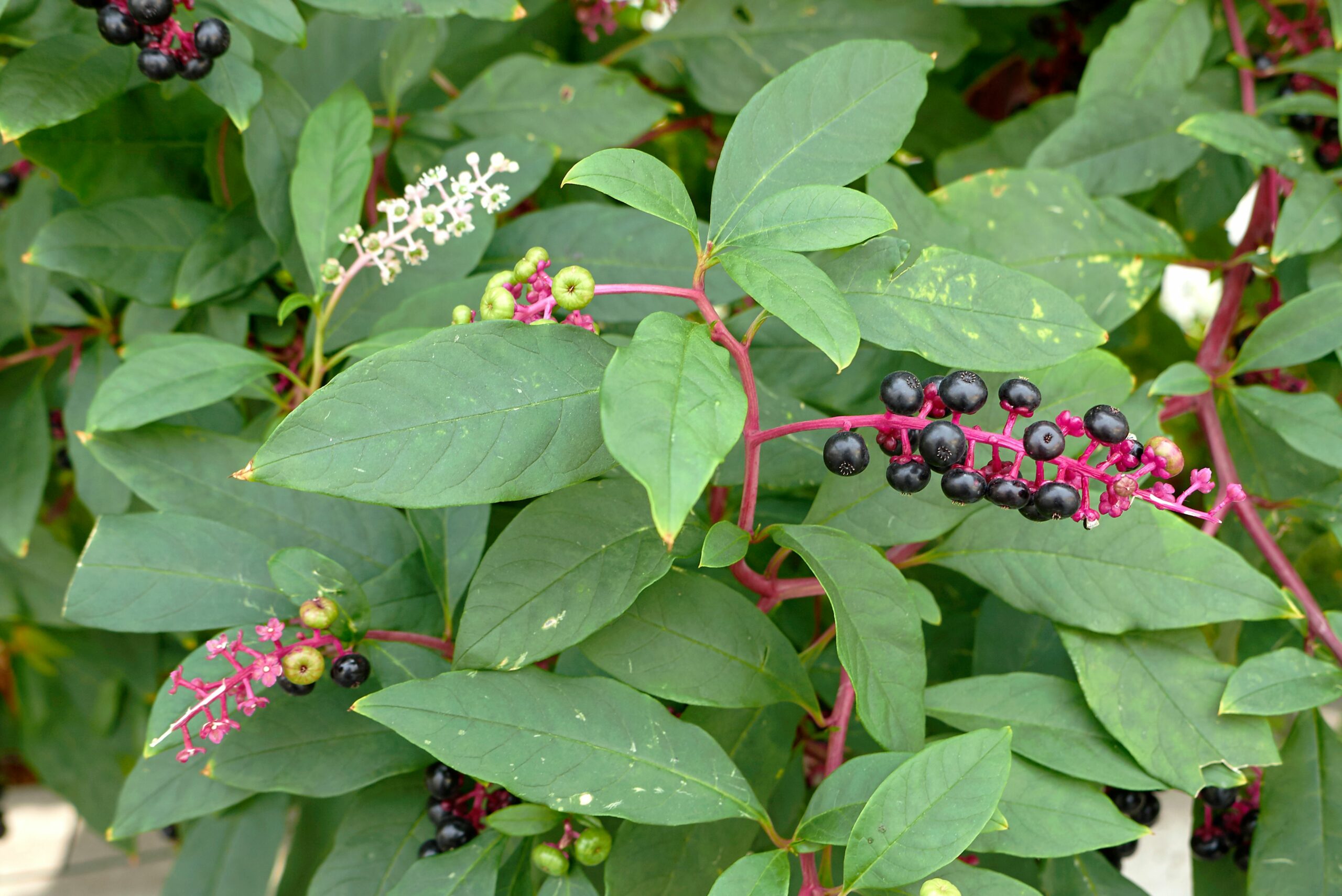The duality of American pokeweed

MILAN, Ill. — Generally speaking, native plants are considered desirable since they support wildlife, are can improve water quality while requiring less water themselves, are beautiful in the landscape, are generally more tolerant of climate conditions and soil types and much more.
However, from time to time a native species is not as appealing as others, and therefore, attempts are made to avoid it or remove it from the landscape. One example is the dreaded poison ivy (Toxicodendron radicans). A second example, and the one we are going to explore today, in part because my mom asked me to, is American pokeweed (Phytolacca americana).
A misunderstood native?
American pokeweed is native to much of the United States with the exception of the Rocky Mountain region. Relatives of the American pokeweed can be found throughout the world in tropical and subtropical climates.
American Pokeweed is an herbaceous perennial that can reach heights of six to 6 to 10 feet and sometimes more. Leaves are simple and alternately arranged on a smooth, typically reddish-pink stem. Leaves are relatively large, averaging between four and seven inches in length. One or more stems grow from a single tuber and, when bent, are easily broken to reveal a partially hollow pith.
White or pink flowers are produced as linear clusters in mid-summer. Pollinated flowers develop to produce deep purple to black berries that are important food sources for some birds, such as northern cardinals, cedar waxwings, pigeons and mourning doves. Birds that have fed on the berries of pokeweed help disperse the seeds to areas near roosting sites, especially open areas and edge habitats.
Management
A single, mature pokeweed plant is capable of producing up to 7,000 seeds annually, and seeds have been observed to remain viable for decades. Within five to nine weeks after germination, Pokeweed seedlings will have developed a tap root capable of regrowth in successive seasons.
Options are available for management depending on the landscape setting. In a cultivated area, pokeweed has a difficult time establishing, and management primarily involves monitoring. Tillage in a garden or landscape setting will prevent seedlings from developing the taproot and reduce perennial survival.
In areas of permanent vegetation, monitoring and control during the early stages of seedling development are the first line of defense. Plants can be pulled by hand while small, but the development of a tap root makes removal difficult. As the plant develops, physical removal may require digging with a shovel.
Chemical control is available as a management tool for larger or more plants. Broadleaf herbicides such as 2-4,D, or dicamba or a nonselective product such as glyphosate may be used to control established plants. When using pesticides/herbicides, be sure to read and follow all label directions before, during, and after use.
Pokeweed and people
Although an important food source for some wildlife species, the entire plant is poisonous to humans. If consumed, symptoms can range from feeling ill to death in rare cases. The berries are especially poisonous, and consumption is not recommended.
Historically, pokeweed was used for food, medicine and dye. Although considered a good source of fat, protein and carbohydrates, nuance is necessary because young stems and leaves are edible only after repeated balancing treatments. Improper preparation prior to consumption can result in harm and is not recommended.
Miss Clipping Out Stories to Save for Later?
Click the Purchase Story button below to order a print of this story. We will print it for you on matte photo paper to keep forever.

